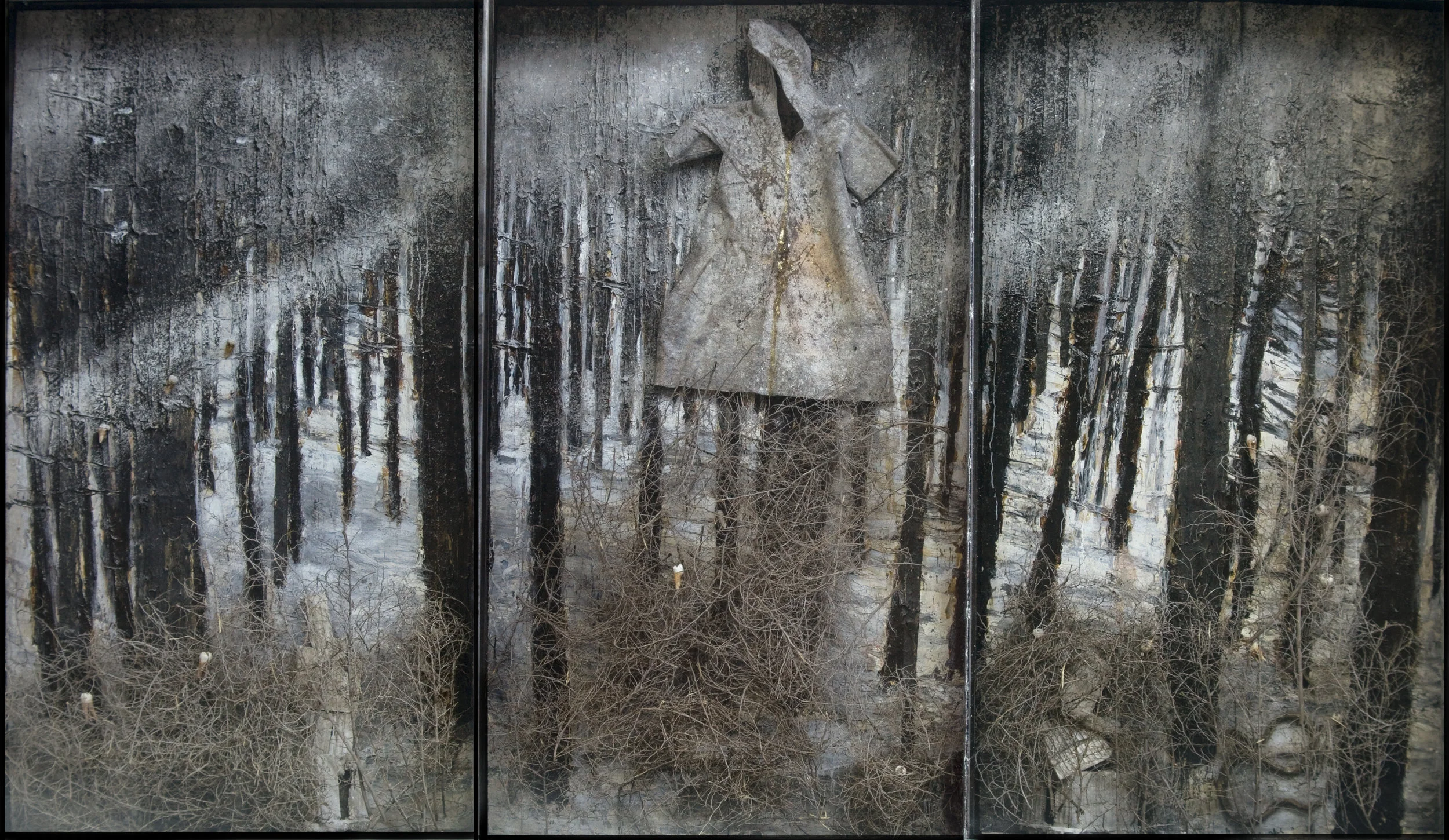Karfunkelfee 2009
Gold paint, chemise, jesmonite, snake, brambles, concrete, acrylic, oil, emulsion, ash and shellac on canvas in steel and glass frame. 332 x 576 x 35cm
White Cube, London
30 October 2009
This was the first exhibition I had seen of Kiefer’s work in a commercial gallery. The work compromised a series of forest diptychs and triptychs displayed in glass and steel vitrines. The exhibition was titled ‘Karfunkelfee’, after a poem by the post-war Austrian writer Ingeborg Bachmann.
"On the Golden bridge, only he who might know the fairy’s secret word can win. I’m sorry to say, along with our last snow, it melted in the garden.”
Of the four huge works in the exhibition I have chosen the title piece to review. Karfunkelfee roughly translates as Carbuncle Fairy, an ambiguous figure from fairy tales who may be good or evil. As Kiefer explained in an interview with Tim Marlow, the word Karfunkel has two meanings; it is firstly a precious stone but also associated with ergot, a fungus that that grows on wheat and other crops turning them black. Human poisoning due to the consumption of bread made from ergot-infected grain was common in Europe in the Middle-Ages. Interestingly, ergot is known in German as ‘the tooth of the wolf’ and may be connected to the Anglo-Saxon poem Beowolf.
This would certainly be of interest to Kiefer, who since the 1970’s has made art that alluded to Teutonic myths, Wagner, and the Black Forest; an artist celebrating German history whilst acknowledging the guilt of its fatal collision with Jewish history that culminated in the Holocaust. Kiefer was taught by Joseph Beuys in Dusseldorf and both the use of found materials and the sombre palette are obvious influences in his work. Unlike Beuys though, his chosen medium was painting and like Georg Baselitz, he reprised the painterly style of expressionism, alluding to emotion in his work rather than truth.
Kiefer’s process is to start with a normal canvas and apply a 75mm thick pigment layer that cracks on drying and then place these in vitrines to make a threshold distancing the viewer from the painting. The background image is a forest on a hillside covered in snow and the trees are painted with dark slashing strokes. He adds items between the canvas and the glass of the vitrine that relate to the theme of the work, in this case a snake, Moroccan thorns, scattered teeth and an empty hooded smock. The result of these boxed in memories is not unlike a display cabinet in a natural history museum. Although there is an absence of figures, a human element is acknowledged through the inclusion of the floating empty hooded smock in the central vitrine. The perfect metaphor for the ambiguous Karfunkelfee.
The work has a portentous melancholy to it but I cannot help feeling that the symbolism is too overt, too carefully (artfully) arranged and that this reduces the force of the impact. This manipulation of his Expressionist inheritance in order to give an authorial mark of emotion risks the viewer doubting the psychological depth of the work (more message than feeling). [1]
[1]Paraphrased from Rosalind E Krauss in The originality of the avant-garde and other modern myths 1984 MIT Press 194
©blackdog 2010
